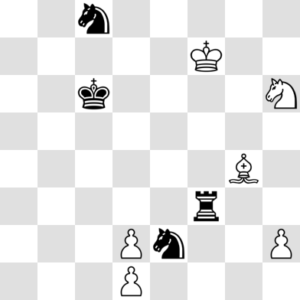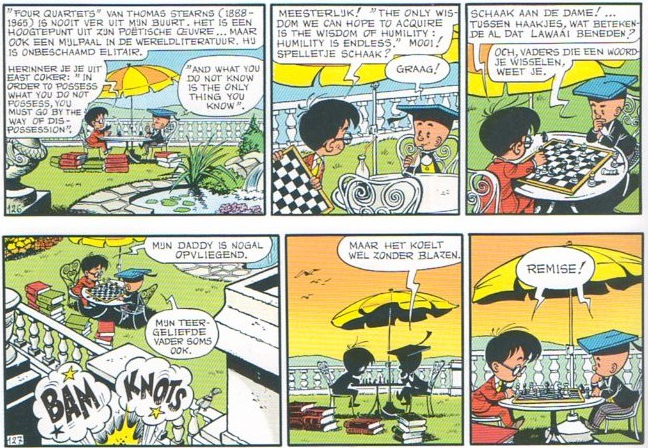Flemish people of a certain age might remember Nero from the newspapers, in which he featured for decades.1 Regular readers of this blog might know him from a previous post. Other people are just referred to that link for context. Last time, Nero’s grandfather was the centre of the plot, this time, the spotlights are on his son, Adhemar. Anyone familiar with the series knows that he is a perpetually six-years old wunderkind who is a professor at Oxford and a Nobel prize winner.
In this volume, there is a different prodigy in the USA whose father gets really angry when he learns that there is some kid smarter than his son. He hires some goons to kill Adhemar, which of course upsets his father, Nero.
Logically, Nero and Adhemar take one of the latter’s rockets to fly across the Atlantic and pay their harasser a visit in his mansion. While the fathers are sorting out their differences,2 the younglings withdraw to the very comfortable looking rooftop where they talk poetry and play a game of chess.4
I will spare you the translation, as it is pretty much entirely unrelated to chess. This is not:
 The reconstruction was a bit problematic as the drawings are rather small. In addition, the wonderboy seems to be moving a black bishop to or from b4 or a4 or somewhere in that vicinity.
The reconstruction was a bit problematic as the drawings are rather small. In addition, the wonderboy seems to be moving a black bishop to or from b4 or a4 or somewhere in that vicinity.
I am, sadly, quite confident in the placement of the pawns on the d-file. Together with the fact that h1 is a black square, you might think that maybe they’re just sitting at the a and h file instead of at the first and eighth rank, but then the pawn on h2 is an anomaly.
But perhaps these two geniuses are just so brilliant that standard chess is too pedestrian for them5 and they have, without conferring, decided on some obscure chess variant in which pawns have supernatural powers.
Realism: 0/5 If there are two bordering borders with a pawn on them, something is wrong.
Probable winner: Nobody. The one chess related word our two prodigies say is remise, which Dutch — and indeed French — for a draw.
1. [Flemish readers of an uncertain age might also remember him, but are advised to consult a doctor.] ↩
2. [Whence the ‘BAM’ and ‘KNOTS’ in the bottom left.3] ↩
3. [The ‘KNOTS’ has nothing to do with knots. It is Dutch for mace or club and is also used, onomatopoeically and with a hard ‘k’, as a sound effect for a crash.] ↩
4. [They also settled the question of how to make nice diagrams.] ↩
5. [Kind of like Capablanca.] ↩
